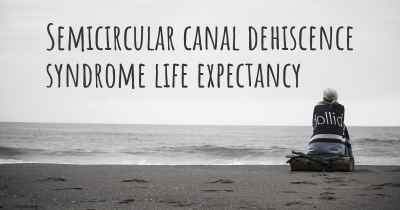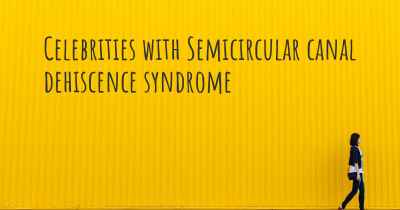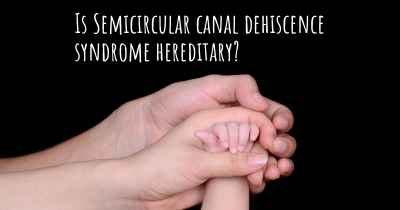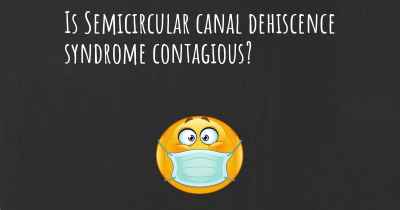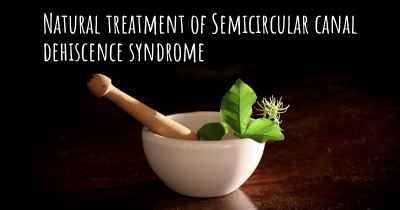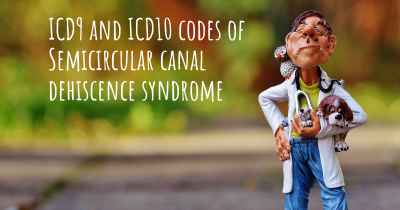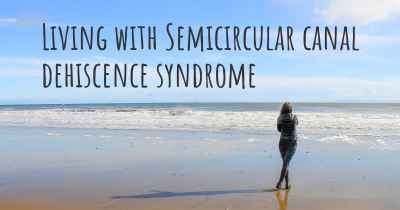Does Semicircular canal dehiscence syndrome have a cure?
Here you can see if Semicircular canal dehiscence syndrome has a cure or not yet. If there is no cure yet, is Semicircular canal dehiscence syndrome chronic? Will a cure soon be discovered?
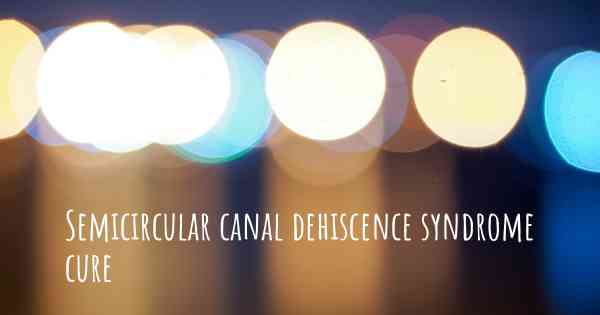
Semicircular canal dehiscence syndrome is a medical condition where a person experiences symptoms related to the inner ear. While there is no definitive cure for this syndrome, treatment options are available to manage the symptoms. These may include lifestyle changes, medication, or surgical interventions. It is important to consult with a healthcare professional for an accurate diagnosis and to discuss the most suitable treatment plan for individual cases.
Semicircular canal dehiscence syndrome (SCDS) is a medical condition that affects the inner ear, specifically the semicircular canals. These canals are responsible for detecting rotational movements of the head and are essential for maintaining balance. In individuals with SCDS, there is a thinning or complete absence of the bone that normally covers the semicircular canals, leading to various symptoms.
The symptoms of SCDS can vary from person to person but commonly include dizziness, vertigo, hearing loss, tinnitus (ringing in the ears), and a sensation of fullness or pressure in the affected ear. These symptoms can significantly impact a person's quality of life, making it important to seek appropriate medical attention.
While there is currently no definitive cure for SCDS, there are treatment options available to manage the symptoms and improve the patient's overall well-being. The choice of treatment depends on the severity of symptoms and the individual's specific situation.
Conservative management is often the first approach for individuals with mild SCDS symptoms. This may involve lifestyle modifications such as avoiding triggers that worsen symptoms, such as loud noises or certain head movements. Additionally, using earplugs or earmuffs to protect the ears from loud noises can be beneficial. In some cases, a hearing aid may be recommended to improve hearing loss associated with SCDS.
Surgical intervention may be considered for individuals with more severe symptoms or when conservative management fails to provide relief. The most common surgical procedure for SCDS is called a canal plugging. During this procedure, the affected semicircular canal is sealed off to prevent abnormal fluid movements and alleviate symptoms. Another surgical option is a canal resurfacing, where the thinning or absent bone is repaired or replaced.
It is important to note that surgical interventions carry risks and should be thoroughly discussed with a qualified healthcare professional. The decision to undergo surgery should be based on a careful evaluation of the potential benefits and risks.
Recovery and prognosis for individuals with SCDS can vary. Some individuals may experience significant improvement in symptoms following treatment, while others may continue to have residual symptoms. It is essential to have regular follow-up appointments with a healthcare professional to monitor progress and adjust treatment as needed.
In conclusion, while there is no definitive cure for SCDS, there are treatment options available to manage the symptoms and improve the patient's quality of life. Conservative management and surgical interventions can be effective in alleviating symptoms, but the choice of treatment depends on the severity of symptoms and individual circumstances. It is important for individuals with SCDS to work closely with a healthcare professional to determine the most appropriate treatment plan.
